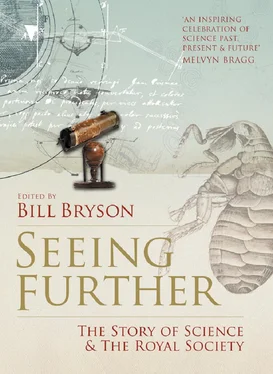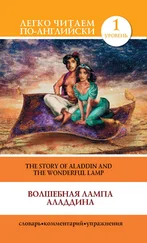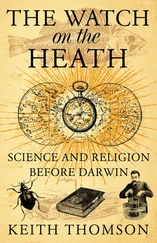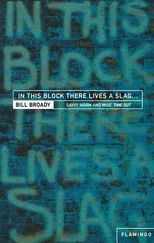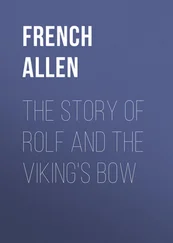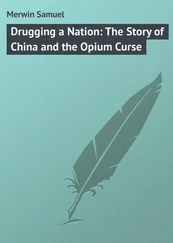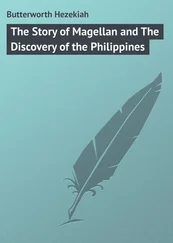Altogether at the Royal Society there are ninety-six committees, all devoted to promoting important research, honouring an achievement, improving education, badgering governments into behaving intelligently, or otherwise effecting an enhancement to what we know or an improvement to how we proceed.
The most important committees of all are the ten devoted to electing new Fellows. Today there are 1,400 Fellows, including 69 Nobel laureates, and it is they who run the Society. ‘It is,’ Stephen Cox tells me, smiling, ‘like a company with 1,400 non-executive directors. They set policy and identify key areas of concern. It’s their society.’
Because of all that it has achieved in its time, there is a tendency to equate the Royal Society with things like atoms and gravity and other bits of hard science, but what impresses me is the boundlessness of its range. Consider the contribution of John Lubbock, friend and neighbour of Charles Darwin. Lubbock was a banker by profession, but was in addition a distinguished botanist, astronomer, expert on the social behaviour of insects, politician and antiquarian. Among much else, he coined the terms palaeolithic, mesolithic and neolithic in 1865. But his real contribution to life was to push through Parliament the first Ancient Monuments Protection Act, which became law in 1882. People forget how much of Britain’s historic fabric was nearly destroyed in the past. Before Lubbock’s intervention, half of Avebury was nearly cleared away for housing, and at one point it was even threatened that Stonehenge, then still in private hands, might be dismantled and shipped to America. Without Lubbock,

An entry in John Lubbock’s diary describing a crab which he intends to name after Charles Darwin, 24 November 1852.
many stone circles, tumuli and other historical features of the landscape would have vanished long ago. Lubbock also, not incidentally, invented the bank holiday. The Royal Society and its Fellows, you see, have long been at the heart of all kinds of things.
It is impossible to list all the ways that the Royal Society has influenced the world, but you can get some idea by typing in ‘Royal Society’ as a word search in the electronic version of the Dictionary of National Biography. That produces 218 pages of results – 4,355 entries, nearly as many as for the Church of England (at 4,500) and considerably more than for the House of Commons (3,124) or House of Lords (2,503). It is more central to the life and history of Great Britain than most people realise.
And as you are about to see, it not only produces the best science, but also some of the very best science writing.
1 JAMES GLEICK
AT THE BEGINNING: MORE THINGS IN HEAVEN AND EARTH
James Gleick last visited the Royal Society when researching his recent biography Isaac Newton. His first book, Chaos, was a National Book Award and Pulitzer Prize finalist and an international bestseller, translated into more than twenty languages. His other books include Genius: The Life and Science of Richard Feynman, Faster: The Acceleration of Just About Everything and What Just Happened: A Chronicle from the Information Frontier.
THE FIRST FORMAL MEETING OF WHAT BECAME THE ROYAL SOCIETY WAS HELD IN LONDON ON 28 NOVEMBER 1660. THE DOZEN MEN PRESENT AGREED TO CONSTITUTE THEMSELVES AS A SOCIETY FOR ‘THE PROMOTING OF EXPERIMENTAL PHILOSOPHY’. EXPERIMENTAL PHILOSOPHY? WHAT COULD THAT MEAN? AS JAMES GLEICK SHOWS FROM THEIR OWN RECORDS, IT MEANT, AMONG OTHER THINGS, A BOUNDLESS CURIOSITY ABOUT NATURAL PHENOMENA OF ALL KINDS, AND SOMETHING ELSE – A KIND OF EXUBERANCE OF INQUIRY WHICH HAS LASTED INTO OUR OWN DAY.
To invent science was a heavy responsibility, which these gentlemen took seriously. Having declared their purpose to be ‘improving’ knowledge, they gathered it and they made it – two different things. From their beginnings in the winter of 1660–61, when they met with the King’s approval Wednesday afternoons in Laurence Rooke’s room at Gresham College, their way of making knowledge was mainly to talk about it.
For accumulating information in the raw, they were well situated in the place that seemed to them the centre of the universe: ‘It has a large Intercourse

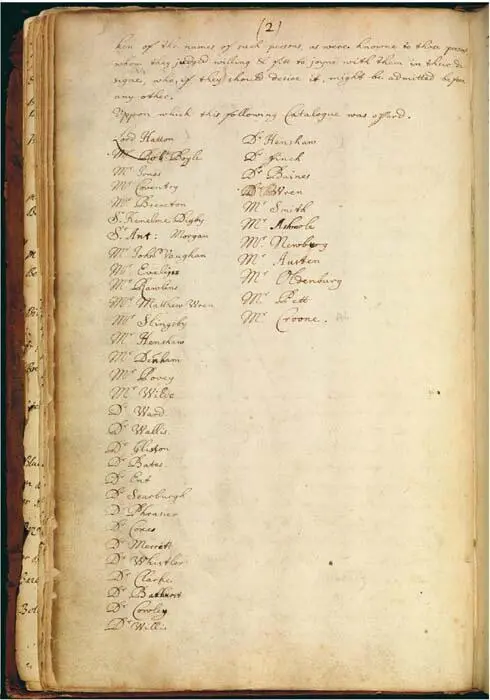
A record of the founding of the Royal Society and the first meeting, 28 November 1660.
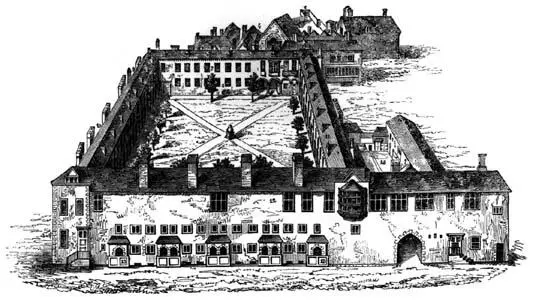
Gresham College, home of the Royal Society, 1660–1710.
with all the Earth:…a City, where all the Noises and Business in the World do meet:…the constant place of Residence for that Knowledge, which is to be made up of the Reports and Intelligence of all Countries.’ But we who know everything tend to forget how little was known. They were starting from scratch. To the extent that the slate was not blank, it often needed erasure.
At an initial meeting on 2 January their thoughts turned to the faraway island of Tenerife, where stood the great peak known to mariners on the Atlantic trade routes and sometimes thought to be the tallest in the known world. If questions could be sent there (Ralph Greatorex, a maker of mathematical instruments with a shop in the Strand, proposed to make the voyage), what would the new and experimental philosophers want to ask? The Lord Viscount Brouncker and Robert Boyle, who was performing experiments on that invisible fluid the air, composed a list:
‘Try the quicksilver experiment.’ This involved a glass tube, bent into a U, partly filled with mercury, and closed at one end. Boyle believed that air had weight and ‘spring’ and that these could be measured. The height of the mercury column fluctuated, which he explained by saying, ‘there may be strange Ebbings and Flowings, as it were, in the Atmosphere’ – from causes unknown. Christopher Wren (‘that excellent Mathematician’) wondered whether this might correspond to ‘those great Flowings and Ebbs of the Sea, that they call the Spring-Tides’, since, after all, Descartes said the tides were caused by pressure made on the air by the Moon and the Intercurrent Ethereal Substance. Boyle, having spent many hours watching the mercury rise and fall unpredictably, somewhat doubted it.
Find out whether a pendulum clock runs faster or slower at the mountain top. This was a problem, though: pendulum clocks were themselves the best measures of time. So Brouncker and Boyle suggested using an hourglass.
Hobble birds with weights and find out whether they fly better above or below.
‘Observe the difference of sounds made by a bell, watch, gun, &c. on the top of the hill, in respect to the same below.’
And many more: candles, vials of smoky liquor, sheep’s bladders filled with air, pieces of iron and copper, and various living creatures, to be carried thither.
A stew of good questions, but to no avail. Greatorex apparently did not go, nor anyone else of use to the virtuosi, for the next half-century. Then, when Mr J. Edens made an expedition to the top of the peak in August 1715, he was less interested in the air than in the volcanic activity: ‘the Sulphur
Читать дальше
